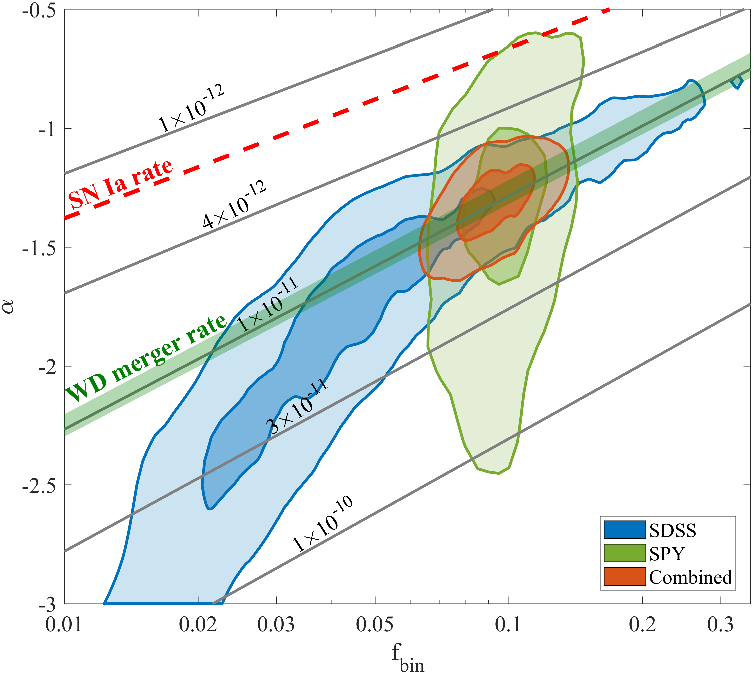The binary fraction, separation distribution, and merger rate of white dwarfs

From a sample of spectra of 439 WDs from the ESO-VLT Supernova-Ia Progenitor Survey (SPY), we measured the maximal changes in radial velocity (ΔRVmax) between epochs, and model the observed ΔRVmax statistics via Monte Carlo simulations, to constrain the population characteristics of double WDs. We then combined these constraints with those obtained by Badenes and Maoz 2012 for a sample of ~4000 WDs from the Sloan Digital Sky Survey (SDSS). We found that about 10% of WDs are double WDs with separations up to 4 AU, and that the Galactic WD merger rate per WD is about 10-11 per year. Integrated over the Galaxy lifetime, this implies that 8.5–11% of all WDs ever formed have merged with another WD. If most double WD mergers end as more-massive WDs, then some 10% of WDs are double WD-merger products, consistent with the observed fraction of WDs in a ‘high-mass bump’ in the WD mass function. The double WD merger rate is 4.5–7 times the Milky Way’s specific SN Ia rate. If most SN Ia explosions stem from the mergers of some double WDs (say, those with massive-enough binary components) then ∼15% of all WD mergers must lead to a SN Ia.
For further reading:
- Dan Maoz, Na'ama Hallakoun, and Carles Badenes "The separation distribution and merger rate of double white dwarfs: improved constraints" 2018, Monthly Notices of the Royal Astronomical Society, 476, 2584
- Dan Maoz and Na'ama Hallakoun "The binary fraction, separation distribution, and merger rate of white dwarfs from SPY" 2017, Monthly Notices of the Royal Astronomical Society, 467, 1414